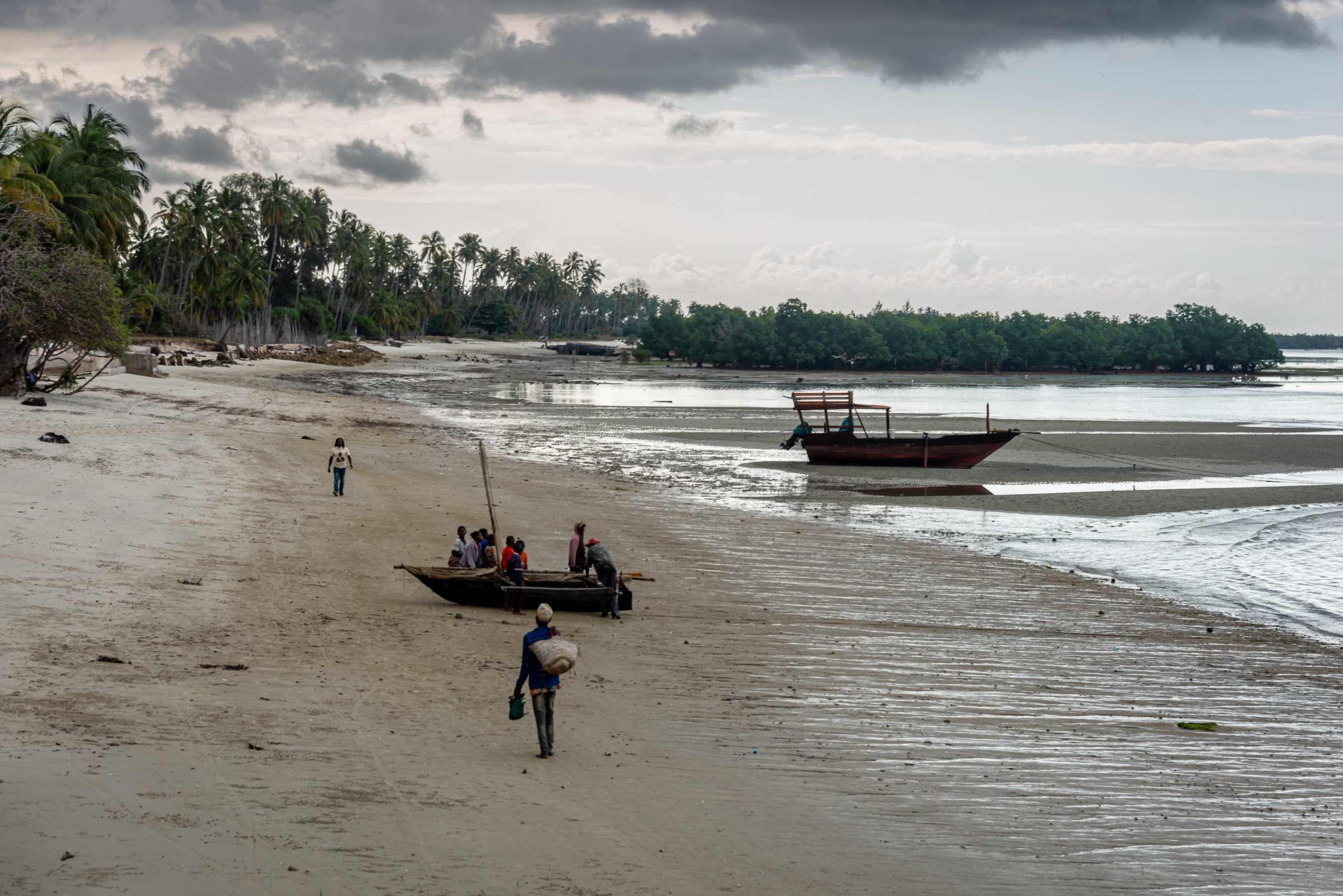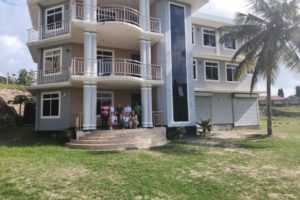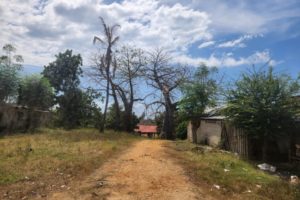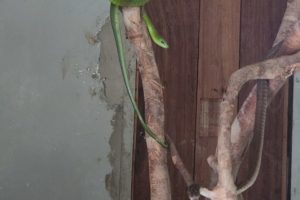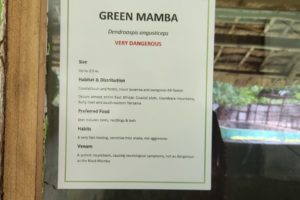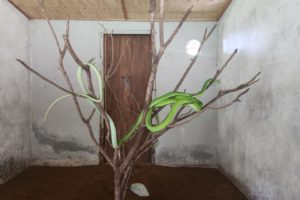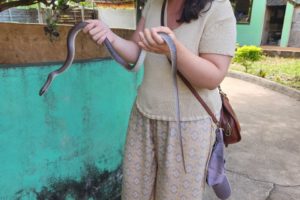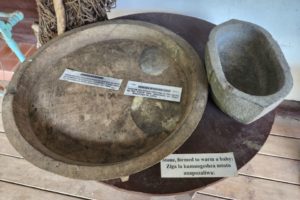Saturday was time for mass in English. What I wasn’t expecting was to be introduced to the entire assembly. That intro got me a hello from a couple of Indian sisters who were visiting and subsequently an invitation to their house.
It was also the day for a glimpse at the sordid past of Tanzania. A visit to Bagamoyo (“Bwaga-Moyo”) which means “Lay down your Heart” in Swahili. The original settlement was called Kaole, founded in 800AD, and grew into an important trading town by the 13th century.
From Wikipedia, we get some more info:
“The Kaole Ruins contain the remnants of two mosques and 30 tombs, dated back to the 13th century. Until the 18th century, Bagamoyo, the settlement 5 kilometres north of Kaole, was a small trading center where most of the population were fishermen and farmers. Their main trading goods were fish, salt and gum, among others. Around the 17th century this area began growing in prosperity and by the 18th century it was an important stop in the caravan and slave trade, acquiring the name Bagamoyo. It became the most important trading entrepot of the east central coast of Africa in the late 19th century.
In the late 18th century, Muslim families settled in Bagamoyo, all of whom were from Oman. They made their living by enforcing taxes on the native population and by trading in salt, gathered from the Nunge coast north of Bagamoyo. In the first half of the 19th century, Bagamoyo became a trading port for ivory and slave, with traders coming from the African interior – places as far as Morogoro, Lake Tanganyika and Usambara- on their way to Zanzibar.
This explains the meaning of the word Bagamoyo (“Bwaga-Moyo”) which means “Lay down your Heart” in Swahili. It is disputed whether this refers to the slave trade which passed through the town (i.e. “give up all hope”) or to the porters who rested in Bagamoyo after carrying 16-kilogram (35 lb) cargoes on their shoulders from the Great Lakes region (i.e. “take the load off and rest”). There is considerable debate regarding the extent of the slave trade as a major export in Bagamoyo, with archival analysis suggesting that ivory was the primary export over slaves, and that many of the caravan porters on the ivory route were free wage laborers as opposed to slaves. However, the history of the slave trade features prominently in the shared culture of its residents and organizations such as UNESCO emphasize its importance as a cultural heritage site memorializing the slave trade in East Africa.”
After visiting the tombs, the mangrooves, the museum and circling a humungus Baobab tree in the vicinity, it was zoo time. My heart broke at the little cages and the small enclosures where such majestic creatures were kept. Tanzania is beautiful, but in their eagerness to provide entertainment, they are making the same mistakes that other countries made decades ago. I really hope it can be fixed before the animals die out.
We headed to a lunch right on a beachfront hotel run owned by priests. A thunderstorm caught us by surprise, but hey … that’s coastal weather for you.
A chance to taste King Fish and Serengeti beer while watching the fishermen haul in their catch for the day.
A photosession that had us in splits and back to the school it was, just in time to hear the choirs – yes… Swahili and English choirs practice for their upcoming masses.
It’s amazing how all of them have such amazing voices and skin and smiles.
One more evening of responding to curious questions, feeling kids tug on my hair and fawn over India.
Views of the city on the way back:
Choir practicing for their next performance:
- Mass time
- Critters
- Critters
- Critters
- Critters
- Breakfast samosas
- Chapati
- View from the priest's terrace
- View from the priest's terrace
- View from the priest's terrace
- Priests' house
- Priests' house
- Priests' house
- Priests' house
- Priests' house
- Priests' house
- Priests' house
- Priests' house
- Johanes - our driver
- Johanes - our driver
- On our way
- On our way
- On our way
- On our way
- On our way
- Straight drive
- Straight drive
- Straight drive
- On our way
- On our way
- Straight drive
- Straight drive
- Roadside
- Roadside
- Bagamoyo
- History Lesson
- History Lesson
- History Lesson
- History Lesson
- History Lesson
- Bagamoyo
- Bagamoyo
- Tomb time
- Bagamoyo
- Bagamoyo
- Bagamoyo
- Bagamoyo
- Bagamoyo
- Bagamoyo
- Bagamoyo
- Bagamoyo
- Baobab
- Baobab
- Baobab
- Baobab
- Baobab
- Bagamoyo
- Bagamoyo
- Bagamoyo
- Bagamoyo
- On our way
- Snake Time
- Snake Time
- Snake Time
- Snake Time
- Snake Time
- Snake Time
- Snake Time
- Snake Time
- Snake Time
- Snake Time
- Snake Time
- Snake Time
- Fair Warning
- Beware... but the glass is broken
- Green mamba
- Red spitting cobra
- Red spitting cobra
- Python
- Snake Time
- Snake Time
- Emu
- A sad caged antelope
- Meet Vanessa
- Meet Vanessa
- Meet Vanessa
- Meet Vanessa
- Meet Vanessa
- Meet Vanessa
- Shoessss
- Symbiotic relationship
- Snake Time
- Snake Time
- Snake Time
- Snake Time
- Snake Time
- Snake Time
- On our way
- On our way
- Straight drive
- Shell used as a candleholder
- Museum pieces
- Museum pieces
- Museum pieces
- Museum pieces
- Museum pieces
- Museum pieces
- Museum pieces
- Museum pieces
- Whale bone
- Whale bone
- Museum pieces
- Slave trade
- Slave trade routes
- Museum pieces
- Museum pieces
- Museum pieces
- FGM traditional tools
- Dried Fruit
- Museum pieces
- Museum pieces
- Drummed up
- Museum pieces
- Museum pieces
- Museum pieces
- Museum pieces
- Nandi Flame
- Sister Petronila
- Sister Petronila
- Sister Petronila
- Nandi Flame
- St Mary's Church
- Beach Party
- Beach Party
- Beach Party
- Beach Party
- Beach Party
- Beach Party
- Beach Party
- Beach Party
- Beach Party
- Beach Party
- Beach Party
- Beach Party
- Beach Party
- King Fish
- King Fish
- Beach Party
- Beach Party
- Beach Party
- Beach Party
- Crossed
- Pano time
- Pano time
- Pano time
- Pano time
- Playa playa
